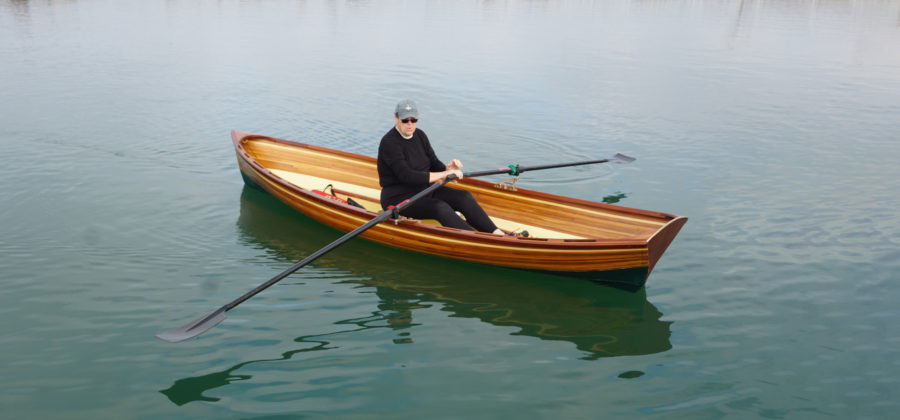In the summer of 2017, the Maine Maritime Museum (MMM) in Bath, Maine, began a year-long restoration of the recently acquired MARY E, a 70′ two-masted schooner built in Bath in 1906 and the last surviving example of her type. As the museum began the renovation, Kurt Spiridakis, MMM’s director of boatbuilding, put a proposal to the board of trustees: the MARY E would need a tender. He suggested they build a replica of a peapod built around 1886 in Maine’s Washington County. Although the MARY E would more likely have had a dory as a tender, the Washington County peapod was representative of the era in which the schooner had been built. Furthermore, it had good load-carrying volume, could accommodate multiple passengers, and, with three rowing stations and two possible rigs, could be configured in several ways. Kurt was given the green light to build the boat in the museum’s Boatshop.The Boatshop was initially established to restore private boats and reproduce originals in the museum’s boat collection, but over time it has expanded its mission to offer courses in boatbuilding—most particularly to middle-school students—and a range of associated traditional crafts. On occasion, the staff build or restore boats on commission.The plans for the peapod had been redrawn for the museum in 1979 by David W. Dillion from the lines and offsets taken off an existing boat in 1937 by Howard I. Chapelle and presented in his classic book, American Small Sailing Craft. Toward the end of the summer in 2017, Kurt lofted the boat and then shifted his focus from hands-on to logistics.
Join The Conversation
We welcome your comments about this article. If you’d like to include a photo or a video with your comment, please email the file or link.
Comments (2)
Leave a Reply
Stay On Course













While Chapelle called this a peapod, I’ve not seen evidence that folks down Washington County way called these peapods. Double enders of all sizes were built on the coast, large ones called pinkies; there were double ended Hampton boats; perhaps better to think of these the way the late Sam Manning did, New England boats. From the evidence of the 1880s peapods were specific to the symmetrical double enders developed for the rowing lobster fishery in the Penobscot Bay Islands.
This was the boat that Jon Wilson built before starting WoodenBoat. Wicked stable; I’ve stood on the mast thwart with the mast in place.
I’d be curious if there any specs on this design, like weight etc.